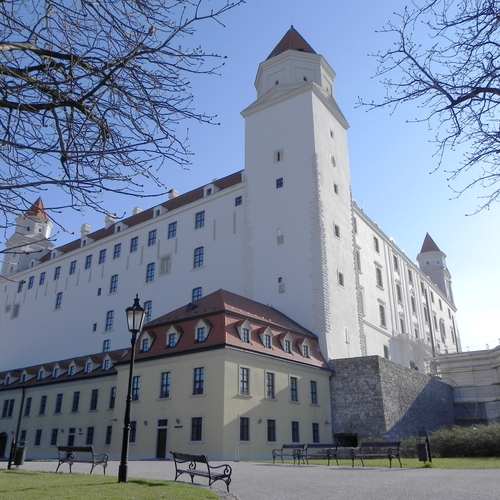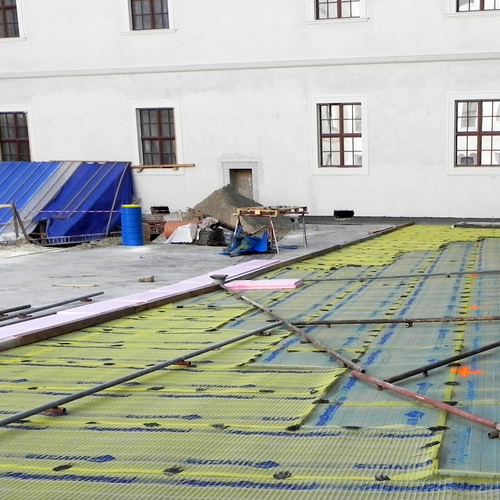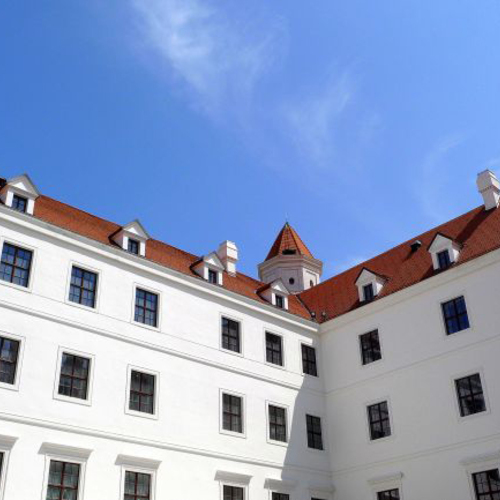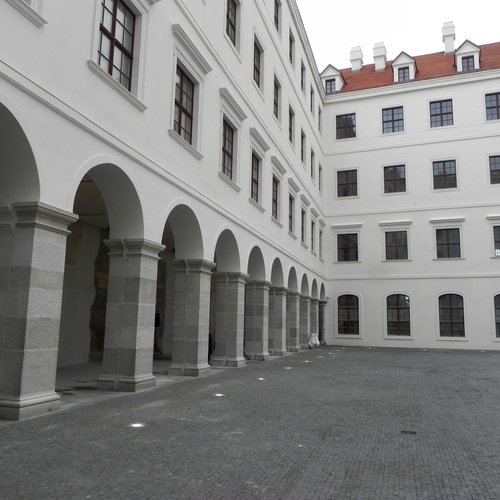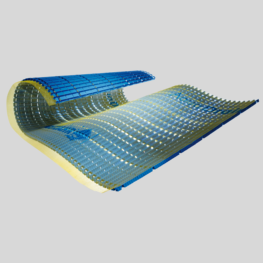Bratislava Castle: Imperial symbol of perseverance
A historic opportunity: 126 million Euros were available for the thorough renovation of Bratislava Castle, which prompted the project management to invest in durable and long-lasting building materials. This also included the complete redesign of the 1,600 square meter courtyard in natural stone - on AquaDrain EK surface drainage mats.
Bratislava Castle is the monumental landmark of the Slovak capital. Its history goes back to the time of the Celts and Romans - and the history of its conversions, additions and renovations is almost as long. Its golden age was during the reign of Maria Theresa. Destroyed by fire in 1811, the castle remained in ruins for 150 years until the mid 20th century. As one of Slovakia's most important buildings, it has inestimable historical and artistic importance. However, justice was not done to its outstanding status until the new renovation measures on the buildings and the castle courtyard started in 2008.
Major renovation – including the courtyard
The leader of the renovation project was aware of one thing: he wouldn't get any new opportunity or money for a comprehensive renovation any time soon, which is why it was important to engineer Jozef Bako to have a solid design that would last for decades. The renovation measures were intended to restore the structure to a perfect condition and preserve it for future generations – including the courtyard. Originally, large tiles were laid here in a mortar bed. But these now had "wet feet": Over the years, water had penetrated the substructure via the joints, where it accumulated on the waterproofing and caused efflorescence and frost damage.
Faster drainage
Drainage capacity improved by up to 150 times with a capillary-passive drainage mat beneath the drainage mortar.
No water on the waterproofing
How AquaDrain EK works: The system is capillary passive and supports the entire covering. Because of this, the drainage channels form a large cavity, so that water can drain away quickly and effectively. At the same time, backwater on the waterproofing no longer flows back into the covering structure, which avoids damage. Because of the back ventilation the covering dries more quickly. Another special feature of this innovative system is the mesh, which remains permanently water-permeable, which means that it does not clog because of the soluble lime in the drainage mortar. Gutjahr gives specialist companies a 6-year guarantee on the system.
Representative castle courtyard
The completely restored castle courtyard now lives up to its name as the main square of the complex. During a two-year construction period, AquaDrain EK passive capillary surface drainage was laid beneath the natural stone covering – over an area of 1,600 square meters. Visitors from all over the world will be able to access the numerous rooms of the castle with dry feet once these also radiate in new splendour after their renovation.
About Bratislava Castle
The monumental Bratislava Castle is situated on a rock of the "Little Carpathians" on the left-hand bank of the Danube, and is the landmark of the Slovakian capital. The castle hill had been settled back in the Stone Age, and the castle itself was first mentioned in writing in 907. A three-aisled basilica has been retained from this period. In the 11th and 12th centuries a pre-Romanesque stone palace was constructed. The first major reconstruction began in the 15th century: under King Sigismund of Luxembourg, a fortress was built in the Gothic style and with the current floor plan. Austrian Empress Maria Theresa commissioned the last major renovation in the 18th century, and the fortress became a residential castle. In May 1811 a fire broke out that destroyed the castle down to the ruins – which then remained untouched for 150 years. The reconstruction was not completed until 1968, and renovation started in 2008. Today, Bratislava Castle is used as a museum and representative building, and the former chapel as a concert hall.
Products used
Similar project reports
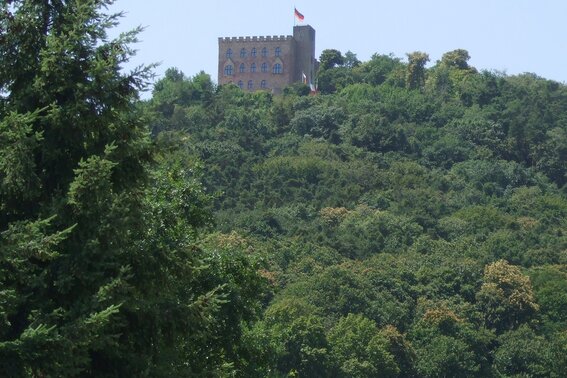
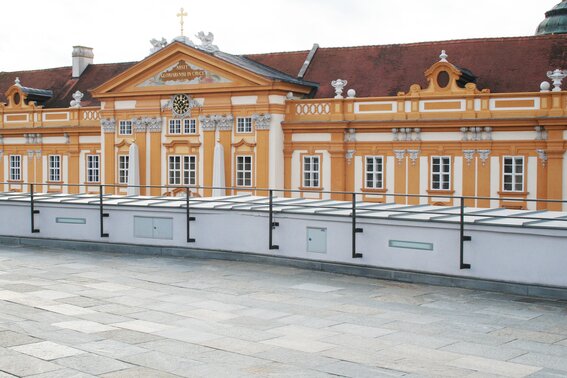
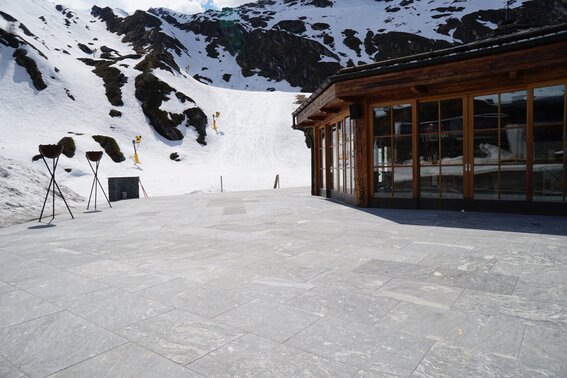
![[TRL] Gutjahr Systemtechnik GmbH - Komplettsysteme für den Außen- und Innenbereich](/build/images/gutjahr-logo.d62773db.svg)

